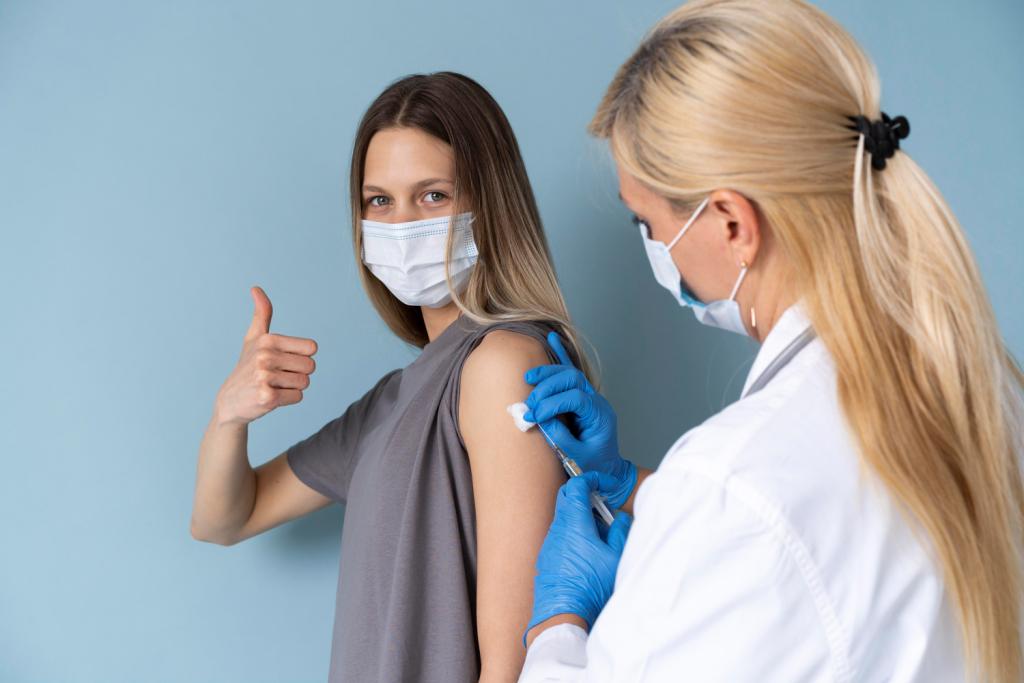Cervical cancer continues to cast a shadow over women’s health globally, with a particularly alarming burden in countries like India. The challenges posed by this formidable disease emphasizes the critical need for efficient screening measures. The transformative role of point-of-care solutions in reshaping the trajectory of cervical cancer screening offers a beacon of hope for improved healthcare outcomes.
According to recent statistics, India accounts for a significant share of the global burden, with approximately 96,922 new cases reported in 2020 alone. The mortality rates are equally alarming, making cervical cancer one of the leading causes of cancer-related deaths among women in India.

Disturbingly, the situation is exacerbated by the disproportionate impact on women in resource-limited settings, where access to preventive measures and healthcare resources is often inadequate. In these areas, cervical cancer not only presents a severe health threat but also underscores the urgency to implement effective screening strategies to mitigate its impact on vulnerable populations.
Paving a path to cervical cancer eradication

In response to the global burden of cervical cancer, the World Health Organization (WHO) has set ambitious goals for its elimination. The key objectives, outlined in the Global Strategy to Accelerate the Elimination of Cervical Cancer as a Public Health Problem, include achieving a 90% human papillomavirus (HPV) vaccine coverage by 2030, ensuring that 70% of women undergo cervical screening at ages 35 and 45, and guaranteeing that 90% of identified cervical cancer cases receive appropriate treatment and care. These goals emphasize the importance of vaccination, screening, and timely treatment to reduce the incidence, mortality, and suffering caused by cervical cancer.
While the WHO goals for the elimination of cervical cancer are commendable, several challenges impede their realization. One major obstacle is the unequal access to HPV vaccination, screening, and treatment services, particularly in resource-limited settings. Cultural stigma surrounding reproductive health and gender-related issues also poses challenges to promoting awareness and encouraging women to undergo screening and vaccination. Global cooperation, resource mobilization, and targeted interventions are essential to overcome these challenges and achieve the WHO’s vision of a world without cervical cancer. Efforts should focus on implementing comprehensive, equitable, and sustainable cervical cancer prevention and control programs, ensuring that no woman is left behind in the quest for a cervical cancer-free future.
Seeking precision in cervical cancer screening

Delving into the inadequacies of pap smears alone reveals that while they have been a cornerstone of cervical cancer screening, they do have limitations. Pap smears are known for their relatively low sensitivity, particularly in detecting precancerous lesions, and they may yield false-negative results. Recent studies highlight that the sensitivity of pap smears for detecting cervical intraepithelial neoplasia grade 2 (CIN2) and above can be as low as 53%. In contrast, HPV DNA screening, which directly detects the presence of high-risk HPV types, offers a more sensitive and accurate method. The ATHENA trial demonstrated that HPV DNA screening outperformed pap smears in identifying CIN3 or worse, emphasizing the need for complementary approaches to enhance screening efficacy. However, the challenges associated with its implementation underscore the importance of addressing issues related to skilled manpower, infrastructure, and cost to ensure equitable access to advanced cervical cancer screening technologies.
Hence, the focus on the importance of point-of-care solutions in cervical screening becomes even more crucial when considering the challenges in resource-limited settings. Innovations like the Truenat HPV DNA test address these challenges by providing rapid and accurate results at the point of care. In resource-limited settings, where infrastructure constraints may impede timely screening, point-of-care solutions prove invaluable in reaching underserved populations and ensuring swift intervention when needed.
Revolutionizing accessibility for mass cervical cancer screening
Proposing mass screening drives with point-of-care HPV DNA tests aligns with the vision of making cervical cancer screening more accessible and widespread. The Truenat test, with its ability to deliver results in less than an hour, presents a game-changing solution for large-scale screening initiatives. In regions where infrastructure limitations hinder conventional screening programs, mass drives with point-of-care tests can substantially increase screening coverage, enabling early detection and intervention on a population scale.
Empowering well-being by women taking the lead

Shifting towards prevention involves not only promoting vaccination but also emphasizing lifestyle modifications and regular screenings. In terms of vaccination, the impact is evident in countries with robust vaccination programs. For instance, Australia, a pioneer in HPV vaccination, witnessed a significant reduction in HPV-related infections and precancerous lesions following the introduction of widespread vaccination. Lifestyle modifications, including smoking cessation and safe sexual practices, contribute to lowering cervical cancer risk. Regular screenings, encompassing both pap smears and HPV DNA tests, remain essential components of preventive measures, offering early detection and intervention opportunities. Encouraging women to prioritize regular screenings, adopt healthy lifestyles, and actively participate in vaccination programs empowers them to take charge of their well-being. The narrative of empowerment and self-care is further strengthened by the fact that early detection through screenings significantly improves the prognosis of cervical cancer, highlighting the importance of individual health choices in the broader context of public health.
References:
Global Cancer Observatory (GCO) website, a part of the International Agency for Research on Cancer (IARC): https://gco.iarc.fr/
WHO website for information on cervical cancer elimination strategies: https://www.who.int/
Karl U. Petry, Bernhard Wörmann, Achim Schneider; Benefits and Risks of Cervical Cancer Screening. Oncol Res Treat 1 September 2014; 37 (Suppl. 3): 48–57. https://doi.org/10.1159/000365059
Wright TC, et al. Primary cervical cancer screening with human papillomavirus: end of study results from the ATHENA study using HPV as the first-line screening test. Gynecol Oncol. 2015;136(2):189-97.
Shared by: Sriram Natarajan,
Founder and CEO of Molbio Diagnostics.




